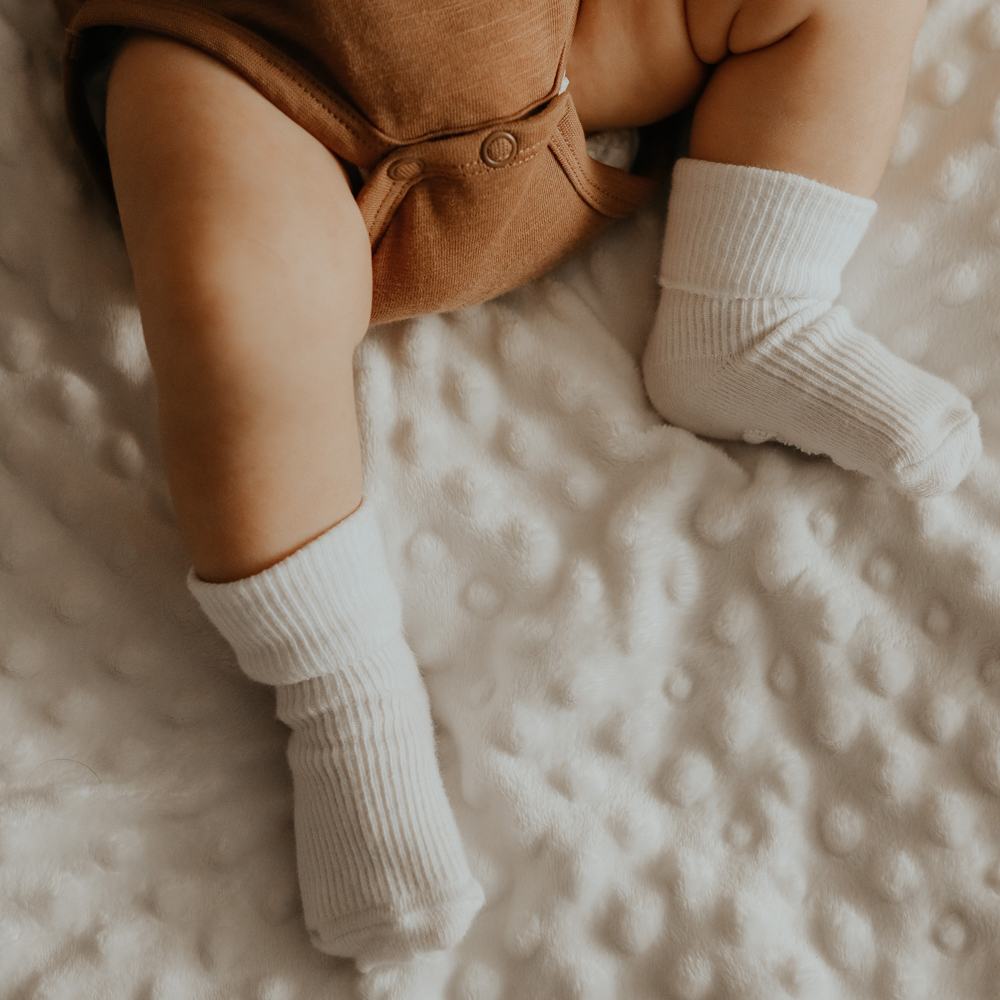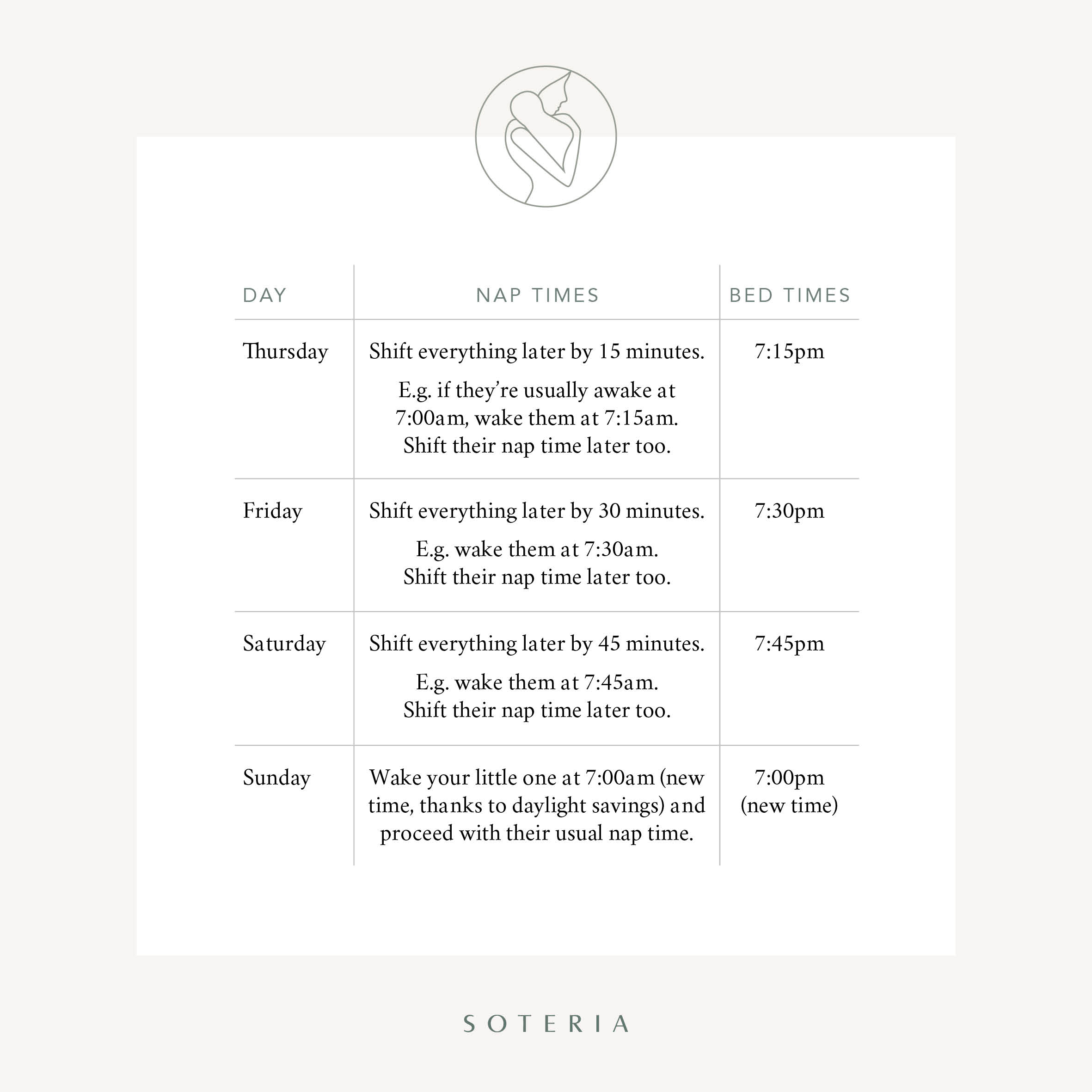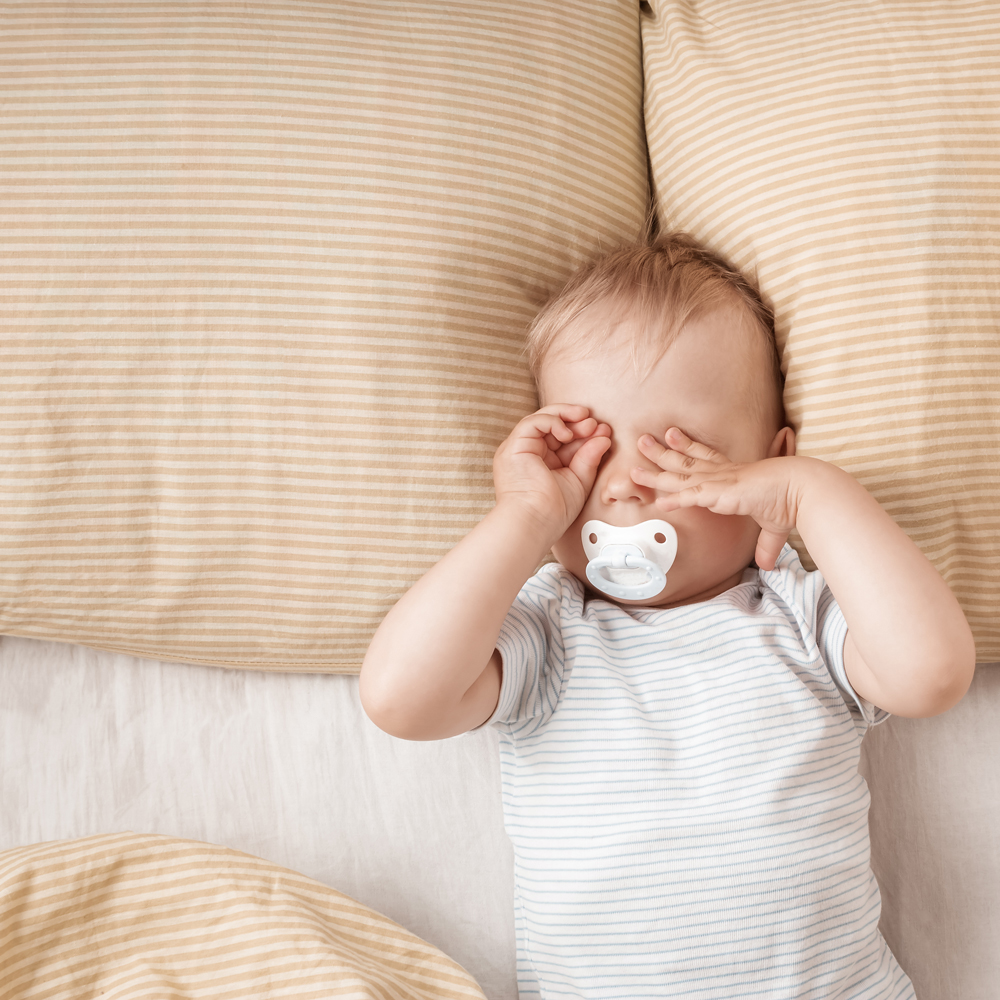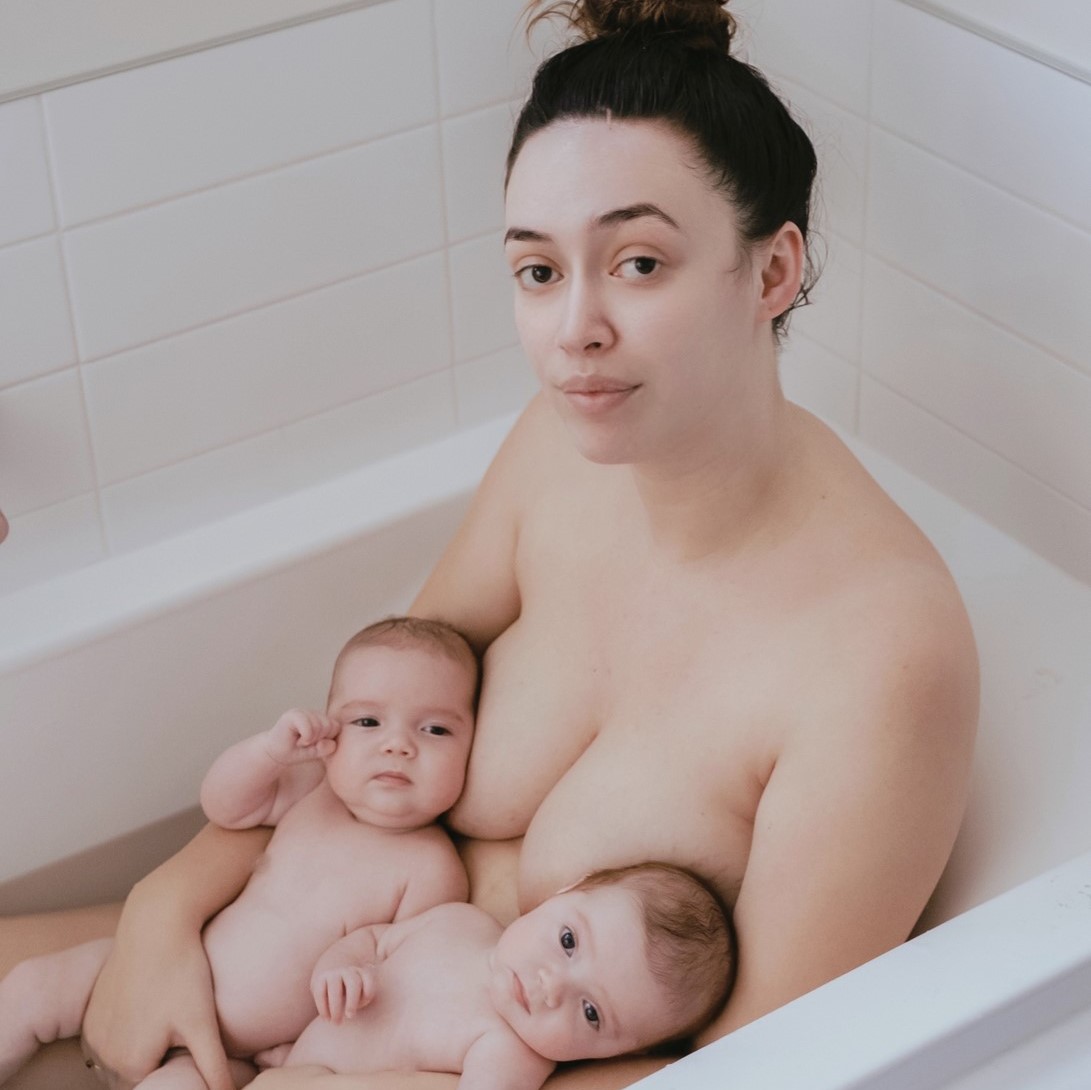How to Help Your Baby Adjust to Daylight Saving Ending

To help with the daylight saving transition, some parents choose to shift their child’s nap times while others prefer to wing it.
To mark the end of daylight saving in New Zealand, clocks will go back an hour on Sunday April 3, 2021 at 3am. Many babies – especially newborns and young infants – won’t notice the difference and will gradually adjust to this slight shift in their internal body clock over the coming days and weeks. However, toddlers, older pēpi and those in a more consistent routine may be more affected by the change.
For many (already tired) parents, the end of daylight saving not only marks the conclusion of summer but effectively means their little one will start waking an hour earlier than usual (new time) and going to bed an hour earlier if they aren’t transitioned out of daylight saving gradually. The new bedtime might sound quite appealing but parents of already early risers often find it helpful to be proactive in starting to prepare their baby or toddler for the clocks going back.
So, how does it work? The idea is to incrementally shift your child’s awake times and nap times later by 15 minutes more each day, for the three days leading up to daylight saving ending. You should begin by adjusting their wake up time first thing in the morning, following suit when they go down for and get up from their nap/s, as well as for bed time.

Helpful tips:
- If you find that your baby or toddler is woken up by sunlight creeping into their room first thing in the morning, black out blinds are a great investment. An environment that is more conducive to sleep, like a dark room, may help with waking in the wee hours.
- If your toddler is one for getting up early, a sleep training clock can be a useful tool for getting them to stay in bed until a more suitable time. The great thing about these clocks is that your child doesn’t need to be able to tell the time, the clock simply changes colour to show them when it’s morning.
- Mornings are starting to get chillier now that it’s autumn, so make sure you’re dressing your pēpi in warm clothing for bed. If you find they’re starting to frequently wake in the early hours of the morning, it may be because the temperature has dropped and they’re feeling cold. Here’s how to check your baby’s temperature quickly and effectively.
- Don’t worry if you’re reading this article after after the daylight saving clock change, you haven’t missed the boat. You can work backwards. Move your child’s bedtime later by 15 minutes each night until you get back to the time you were used to before the change. E.g. if they’re now wanting to go to bed at 6pm but their bedtime is usually 7pm, put them down at 6:15pm tonight, then 6:30pm the night after and so on and so forth.



